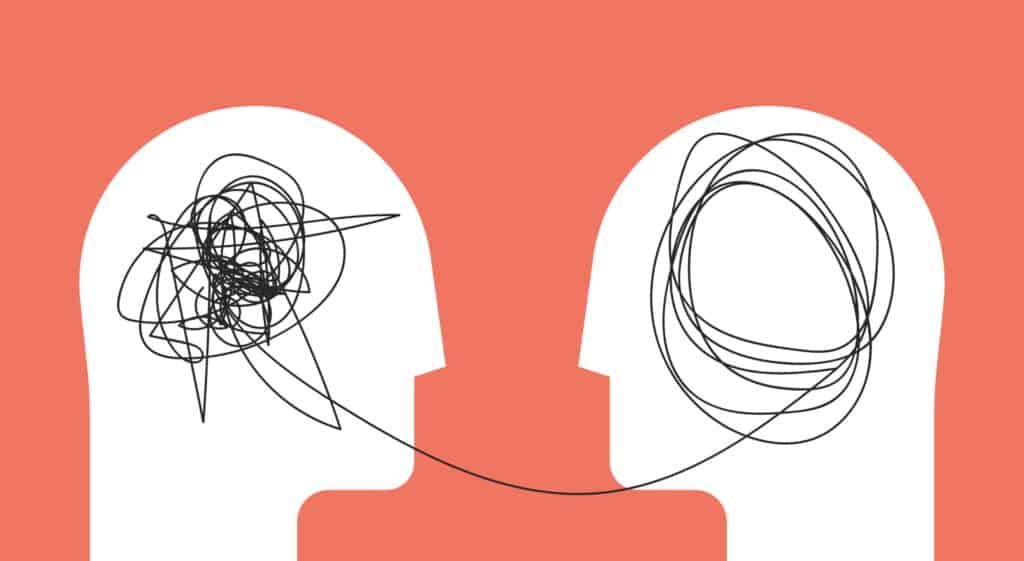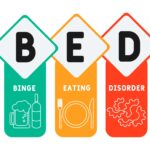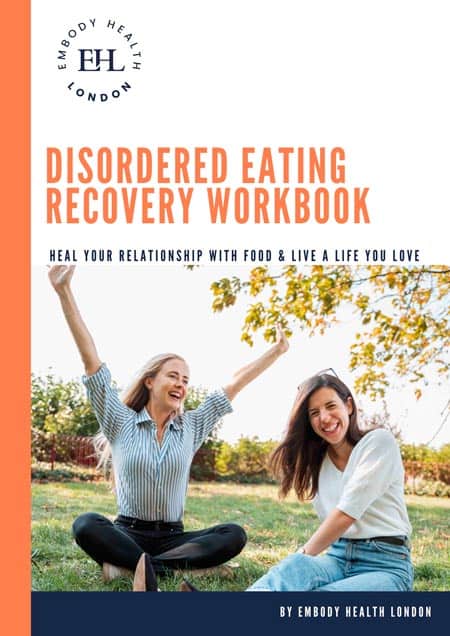Blog

How to rewire negative thought patterns on your journey towards food freedom
When you’re attempting to heal your relationship with food and your body, overcoming those deeply ingrained negative beliefs stemming from diet culture is often one of the biggest obstacles standing between you and food freedom.
If you find yourself getting stuck in a cycle of disordered thought patterns, you’re not alone!
Cognitive reframing or cognitive restructuring is a tool used in cognitive behavioural therapy (CBT) to rewire a person’s thought processes by challenging unhelpful concepts and ideas.1 It is based on the theory that perspective is learned and can be altered.
The goal is to eventually establish a more constructive interpretation of difficult circumstances. While you can’t prevent uncomfortable situations from occurring, you can change the way you think about them.
Amongst other CBT strategies, cognitive reframing has strong evidence supporting its use in eating disorders.2
How does cognitive reframing work?
The process of cognitive reframing is fairly simple. First, using the prompts outlined below, reflect on the negative event, your interpretation of it and the consequences that occurred. Next, challenge this interpretation and develop an alternative conclusion that is more constructive.
Cognitive reframing is most effective when it’s done as soon after the negative situation as possible. You might like to write your reflections down in a notebook or type it out on your phone – whatever works for you!
ONE: Activating event
The activating event is the situation that triggered the disordered thoughts and the resulting negative consequences.
- What happened, step-by-step? Include as many details as you can.
- What caused the activating event?
- How does what happened compare to what you expected to happen?
TWO: Interpretation
Your interpretation of the activating event is demonstrated by the thoughts that occur as a result. This is what we are trying to challenge with cognitive reframing!
- What thoughts did the event trigger? What is the story you’re telling yourself about what happened?
- What exactly made you think that – in order words, what belief or beliefs are your thoughts stemming from? Remember that although your beliefs feel real, they are not necessarily based in fact.
THREE: Consequences
The consequences are the emotions, physical experiences and behaviours that result from your interpretation of the activating event.
- What emotions did you experience? You might find it helpful to use The Feeling Wheel (you can find it at the bottom of this page!), which has been shown to help people to identify and communicate their emotions.3
- How intense was the emotion? Rate it in intensity from 1 to 10.
- What physical effects did you experience in your body?
- What behaviours did you engage in?
- What might be the underlying purpose of the behaviours? For example, you may be subconsciously trying to create a sense of control, comfort or distraction.
FOUR: Disputing
Disputing is at the very core of cognitive reframing. This is where you interrupt your negative thoughts and behaviours to begin replacing them with more positive or neutral alternatives.
- Is your interpretation based on emotion or fact? What evidence is there to prove one way or the other?
- What other possible explanations are there for the activating event? What is the most positive or a more neutral interpretation that you can think of?
- What would you say to a friend if they were in your shoes?
- Choose someone you admire – how would they interpret this event?
FIVE: End result
The final step is the end result, where you reflect on the process and decide to do things differently next time.
- How does visualising an alternative interpretation make you feel?
- What might you do differently next time? Consider coming up with a list of alternative coping strategies that you can use rather than the disordered behaviours.
Although this process might sound time-consuming, the more you practice cognitive reframing, the easier it will become. Over time, you’ll be able to do this more quickly, and eventually the more positive thought will become the automatic one.
How can cognitive reframing help me to find food freedom?
Let’s put cognitive reframing into action in the context of disordered eating. Here’s how it might look using an example of a situation that many of our clients find themselves in:
ONE: Activating event
I went shopping with a friend at my favourite store. I tried on a shirt in my usual size but it was much too small. I thought I would be size A but I was actually size B.
TWO: Interpretation
This must mean that I have lost control and gained a lot of weight. Everyone will be thinking how terrible I look. I think these thoughts are based on the belief that being thinner will make me more attractive and loveable.
THREE: Consequences
I felt overwhelmed (9/10), ashamed (10/10) and helpless (8/10). I had an increased heart rate and my chest feels tight. I spent extra time at the gym to feel more in control.
FOUR: Disputing
My thoughts are probably not based on fact because all of my other clothes still fit me. Other possible explanations for the activating event are that the size of that particular shirt runs small or that the cut is not right for my body. I would tell a friend that their clothes are meant to fit them, not the other way around. My sister would tell me that my clothing size doesn’t make me any more or less loveable.
FIVE: End result
After thinking of a more logical explanation, I feel calmer. Rather than increasing my exercise next time I feel out of control, I will do a meditation practice or a grounding exercise.
At Embody Health London, our dietitians specialise in helping our clients to find peace with food and their bodies. Reach out to us at [email protected] to learn more about how we can support you through this.
Karli Battaglia MDiet, APD
EHL Team x

The Feelings Wheel, originally created by Dr Gloria Willcox and sourced from Calm (https://blog.calm.com/blog/the-feelings-wheel)
References
- Clark, D.A. (2013). Cognitive Restructuring. In The Wiley Handbook of Cognitive Behavioral Therapy, S.G. Hofmann (Ed.).https://doi.org/10.1002/9781118528563.wbcbt02
- Efficacy and Effectiveness – CBT-E [Internet]. CBT-E. [cited 11 May 2021]. Available from: https://www.cbte.co/research/efficacy-and-effectiveness/
- Willcox G. The Feeling Wheel. Transactional Analysis Journal. 1982;12(4):274-276.














